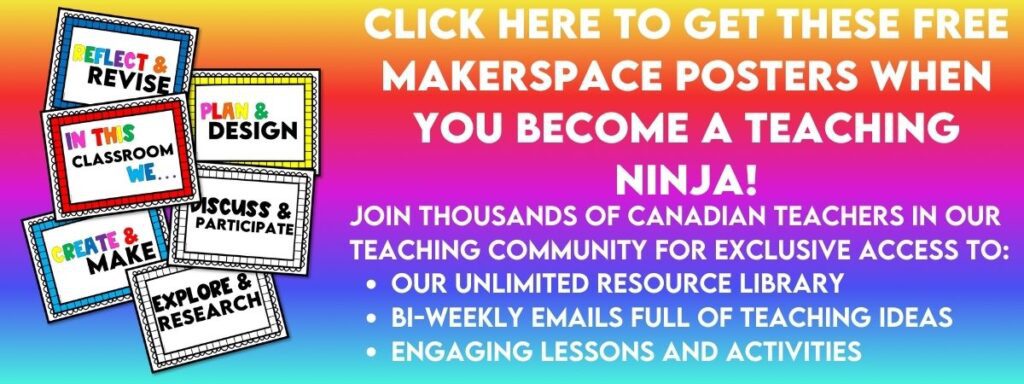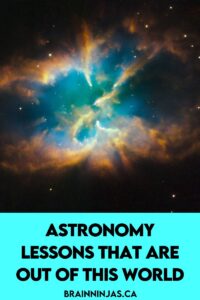
Ever since I can remember, the objects in space have fascinated me. Whether learning about Halley’s Comet in science class or taking astronomy lessons while in university, it has always been exciting to learn about the different objects in the Universe.
As an adult, learning about the different ways cultures talk about objects in space has been even more interesting. During a trip to Australia, the stories of the people who lived in the Luritja lands were shared during an astronomy presentation. It was the first time I had an appreciation that the Greek-named constellations and the stories I had learned growing up weren’t the first stories to be told about the stars. At that time, I started seeking out the stories told by Indigenous People across North America.
That is when I decided there were many more astronomy lessons to be learned in the classroom. Read on to see some of the lessons we use in our classroom.
Astronomy Lessons for the Classroom
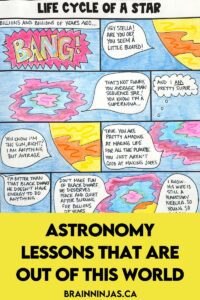
Some of our astronomy lessons are purely scientific, but we have included Indigenous perspectives when possible.
Our Basic Lessons resource is the perfect place to start. It looks at scientific and unscientific statements and how to determine the difference. Students will examine the difference between astronomy and astrology. It also includes lessons about how astronomy has been used by different cultures throughout history, light-emitting and reflecting, objects in the Universe, objects in the Solar System, stars, astronomy, and time (day/night, seasons). Find the Basic Astronomy Lessons on TpT ($USD) or our BN Shop ($CAN).
The Phases of the Moon are challenging to remember, but there are several different activities to help students learn. Our moon lessons also include information about the different tides. Find The Moon Lessons on TpT ($USD) or our BN Shop ($CAN).
Eclipses come and go, but students don’t usually have the chance to see them in real life. We enjoyed creating projects around what we learned. Find Eclipses on TpT ($USD) or our BN Shop ($CAN).
Our Stars and Constellations resource has a variety of lessons, including the life cycles of stars and the different cultural representations of constellations. This set of lessons has some of our favourite projects. Find Stars and Constellations on TpT ($USD) or our BN Shop ($CAN).
We challenged our students to create all kinds of new inventions to help with space exploration. Find the Astronomy STEM Challenges on TpT ($USD) or our BN Shop ($CAN).
Should people be travelling into space for tourism? This activity asks students to look at the pros and cons of space travel for pleasure. Find the Space Wars Multiple Perspectives Activities on TpT ($USD) or our BN Shop ($CAN).
Turn Those Lessons into Maker Space Activities
Do you like to do projects with your students? You don’t have to have a complete maker space to create an environment for your students to create and learn. Use our free makerspace posters to inspire your students. If you’re already on our email list, you can find the posters in our Resource Library. If you’re not on the list, we’ll send them to you for free when you sign up.
Make Your Astronomy Lessons into a Unit
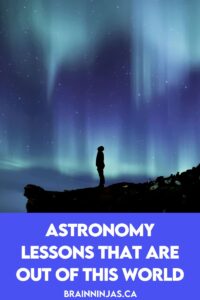
We created a set of Astronomy Reading Passages because we couldn’t find enough information for students to read that was age appropriate and at the right reading level. We use these passages in place of textbooks and websites during our unit. You can print or use them digitally. They even include loose text that can be read by assistive technology. Find the Astronomy Reading Passages on TpT ($USD) or our BN Shop ($CAN).
If you’ve done our entire unit, this Interactive Review Game is a great way to review everything. It’s a digital game that uses Google Slides. Use the printable page for student accountability. Find the Astronomy Interactive Review Game on TpT ($USD) or our BN Shop ($CAN).
We offer our Astonomy Bundle at a discount when you buy the whole thing. It includes a set of word wall cards and flash cards. They are editable and help support your students. Find the Astonomy Bundle on TpT ($USD) or our BN Shop ($CAN).
Exploring How Indigenous People View the Constellations
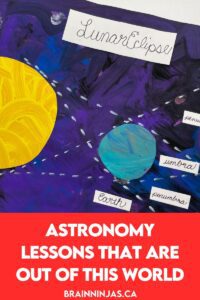
Indigenous Peoples in Canada have their own unique perspectives and cultural traditions about the stars and constellations. These often reflect the deep connections that Indigenous Peoples have with the natural world and the spiritual significance they place on the stars and other celestial bodies.
For example, the Anishinaabe People view the stars as their ancestors and believe that each constellation represents a specific Anishinaabe clan or family. They believe that the stars guide them on their journeys and that each star has its own teachings and lessons to impart.
Similarly, the Cree have their own traditions and beliefs. They view the stars as spiritual beings and believe that they can communicate with the stars through prayer and ceremony. The Cree also have specific constellations that they use for navigation and to mark the changing of the seasons.
In many First Nations, the stars and constellations are seen as important symbols of cultural identity and connection to the land. They are often depicted in traditional artwork, such as beadwork, quillwork, and carvings, and are used in storytelling and other cultural practices.
Wilfred Buck tells many different constellation and sky stories on YouTube Channel: StrongFront.TV.
This is one of our favourite stories: Makinak: The Turtle.
Learning About the James Webb Space Telescope
The James Webb Space Telescope (JWST) is a large, powerful observatory designed to study the universe in infrared light. It is named after James E. Webb, a former administrator of NASA who played a key role in the development of the Apollo program.
It is studying the formation of galaxies, stars, and planetary systems. The telescope is investigating the origins of life. It is studying the early universe and how it was formed. The telescope will be studying how stars are formed. The JWST will be studying planets that are outside the Solar System. It is looking for clues to support life on other planets. Lastly, it will be studying our own Solar System. Scientists are looking for more information about asteroids, comets and what objects are made from.
It launched on December 25, 2021. You can view the images on the NASA Website.
Our Favourite Astronomy Books for the Classroom
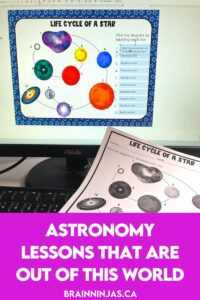
National Geographic Kids First Big Book of Space by Catherine D. Hughes
There’s No Place Like Space!: All About Our Solar System by Tish Rabe
The Magic School Bus Lost in the Solar System by Joanna Cole
Astronomy for Kids: How to Explore Outer Space with Binoculars, a Telescope, or Just Your Eyes! by Dr. Bruce Betts
The Kids’ Book of the Night Sky by Ann Love and Jane Drake
Our Solar System: An Exploration of Planets, Moons, Asteroids, and Other Mysteries of Space by Peter Riley
A is for Astronaut: Blasting Through the Alphabet by Clayton Anderson
Chris Hadfield: The Man Who Discovered Earth by Caroline Adderson
Lucy and the Rocket Dog by Will Buckingham
The Darkest Dark by Chris Hadfield
Amazing Feats of Aerospace Engineering by Sheri Bell-Rehwoldt
Looking at the Canadian Space Agency
The Canadian government has resources available to learn about space programs and astronauts. There are even experiments for young scientists available. Find the Canadian Space Agency website here.
We use the website when students are doing research on different celestial objects. The fact sheets have much less complicated information making them a good place to start research projects.
There are also profiles of Canadian astronauts.
Best of all, there is a news feed so you can keep up to date with space news.
Do You Teach Science?
We have written other posts about several different science topics.
- Engaging Electricity Lessons to Shock Your Students
- How to Grow a Healthy Classroom with Plants
- Engaging Weather Lessons All In One Place
- How to Learn About Wetlands Without A Pond
- How to Escalate Your Chemistry Experiments
- 15 Simple Machines Activities that Will Hook Your Students
What are some of your favourite astronomy lessons? Share them with us by leaving a comment below.

